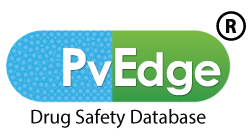Much of the effort in PV is focused on identifying, collecting, evaluating, and transforming relevant data into usable information for regulators and companies to address safety concerns and inform the public and prescribers. The volume of individual case safety reports (ICSRs) increases yearly, but it is estimated that more than 90% of AEs go unreported. Also, there is an unprecedented rise in data volumes coming from journals, patents, articles, social media, and non-standardized data sources.
The continuously evolving regulations and increasing pressure to improve quality and patient safety while providing efficient and cost-effective PV operations are leading the firms to rethink their legacy systems and manual processes. The increasing regulatory requirements demanded by regulatory authorities’ further drives complexity. Together these factors drive an increase in resource demands and costs which are typically addressed by outsourcing or offshoring of workforce.
Hence, there is a need of new sustainable and scalable approaches to offset the increasing resource demands. Along with large amounts of high-quality historic adverse event data and highly standardized processes, AI related approaches are suitable to address these challenges.
Use of AI technologies in PV operations for predictive modelling:
There are four broad ways of usage of AI technologies in ICSR processing.
- Auto-recognition of structured and unstructured content:
Comprises components for recognition of incoming case intake information via XML, Docx, images including PDF and PDF text including forms/tables. Here OCR/ICR along with NLP/machine learning, text mining corpus is used to extract ICSR information from information sources in a regulatory compliant manner.
- Use of AI algorithms:
Sometimes, the quality of information available in ICSR is poor. In such scenarios, semi-supervised or unsupervised learnings play a major role in devising hypothesis. For example, building unlisted events and Drugs Correlation, Causality Classifiers etc., specific types of Neural Networks are built and improvised with training over a period. These are faster and more accurate compared to other methods. The data which has been extracted from the safety databases for the purpose of signal detection can be useful as a train data to train the system via AI algorithms like Neural network for developing the predictive model via repetitive data iterations in the AI algorithm. With the help of this train data we can optimize the machine for more and more accuracy in predicting more accurate output for signal detection.
- Data defining in AI algorithms:
Once the algorithms (Neural network, logistic regression, SVM, Nive Bayes, k-means etc) were fixed, they can be embedded in programming level with help of tools like R-studio & Python by defining the data variables via several layers and codes. The structured data can be defined in the AI algorithm by using different data variables by understanding the PV data functionally and also target variable can be defined for obtaining the predictive output via formulating the R-script or Python script.
- Hosting of AI algorithms with data at application level:
Once the data will be defined in the AI algorithms via formulating the R-scripts or Python scripts, those scripts can easily be fired later at the database level at the back end of any safety application which can be easily linked with the application UI by providing a front end button or option for predictive model for any type of future result predictions in the graphical or any other requisite format. So, in a way by providing a predictive analysis button at front end of any safety database UI, we will soon have an AI enabled safety solution.
Benefits:
- Reduced cycle times: It significantly reduces cycle time achieved by processing cases faster through automation
- Improved quality and accuracy: Achieved through standardized inputs and automated case intake and processing
- A complementary solution of existing safety databases: Artificial Intelligence can be implemented without much disruption to the systems and processes currently managed within pharma ecosystem due to its adherence to standards like E2B natively
- Scalable and futuristic solution: AI allows to handle volume growth by managing the growing Adverse Events (AE) volume and diverse types of incoming data formats
- Enhancement of productivity: Helps in minimization of time and effort on low-value data entry and manual processing steps
Use cases:
There are some extraordinary examples of AI being developed within PV, such as auto-narrative generation, narrative analysis (including case extraction and creation); QC assessment; causality assessment; and ‘touchless’ case processing, where non-serious cases are received, verified, coded, processed and submitted without any human intervention.
A company had developed an AI solution for Pharmacovigilance that employs machine learning and artificial intelligence to solve industry problems with cognitive automation. This pluggable cognitive automation solution provides simplified processes, improved quality, better compliance and lower cost of case processing.



